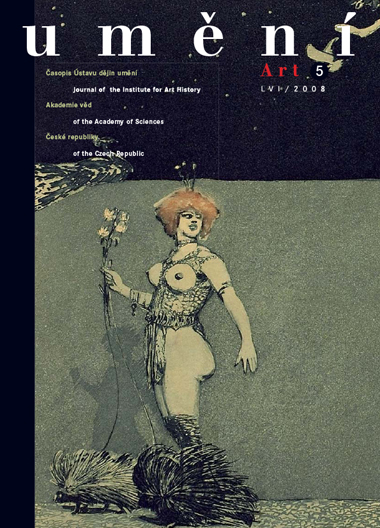Štěpán Vácha
Antiquitatis illustre monimentum. Die Klosterkirche in Sedletz und ihre Restaurierung von 1700-1709
Drawing on information already available and information hitherto unpublished, this article presents a complex account of the restoration of the monastery church of the Virgin Mary in Sedlec carried out in 1700-1709. This was an extraordinary artistic undertaking, its final appearance emerging out of close cooperation between the commissioner, the builders, and the artists who created the paintings and murals. Reports from the 17th and the early 18th centuries reveal how highly esteemed this important mediaeval landmark was, even though it had lain in ruin since it was burnt down by the Hussites in 1421. It was referred to as antiquitatis illustre monimentum or splendissima basilica. Its aesthetic qualities and at that time already apparent monumental value made it a remarkable act of renovation in the history of European art. Restoration of the cathedral, a task that in 1700 the Abbot of Sedlec, Heinrich Snopek, assigned to the Prague builder Paul Ignaz Bayer, was from the outset intended as a full-blown restitution of the site to its original state in an effort to once again make the Sedlec monastery - in the words of the Waldsassen chronicler Otto - 'eines der schönsten und berühmtesten im gantzen Orden'. Snopek had no hesitation either to submit the selection of artists to this criterion: instead of Bayer he hired the services of Johann Blasius Santini-Aichel, who proposed a strikingly distinct project to restore the church in a Baroque-Gothic style, endeavoured to obtain a large set of altar and hung paintings by the renowned painter Michael Willmann, or by Johann Christoph Liška or Anthonis Schoonjans. Similary, the distinguished Prague fresco painter Johann Jakob Steinfels initially decorated the church in frescoes, but the Sedlec abbot had also seriously entertained the possibility of engaging the Italian Andrea Pozzo.
Full-text in the Digital Library of the Czech Academy of Sciences:
https://kramerius.lib.cas.cz/uuid/uuid:67c94ced-e9c1-dd5b-c052-5bb540301cd3
< back

